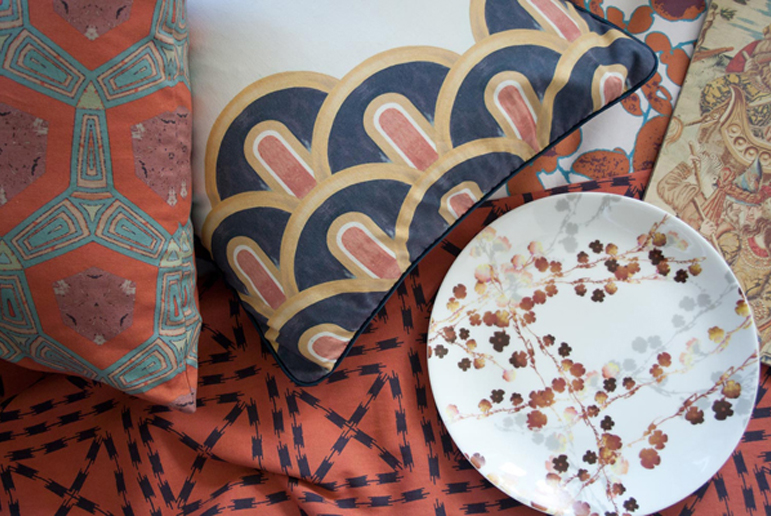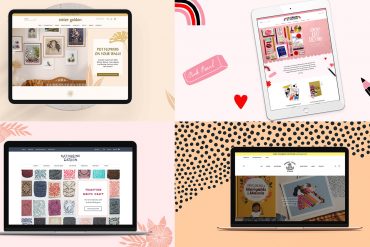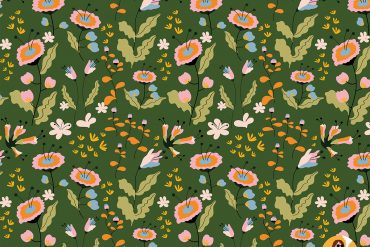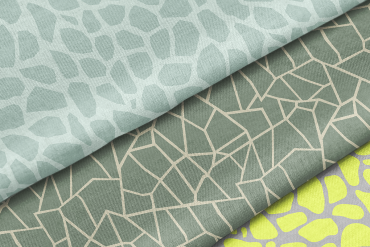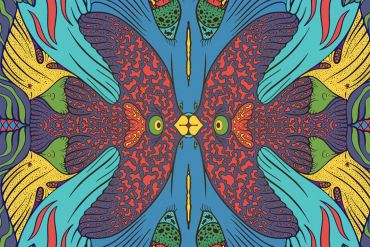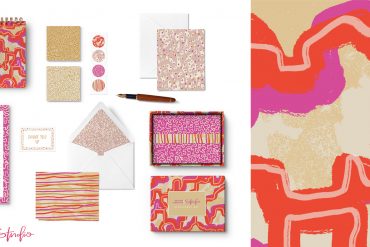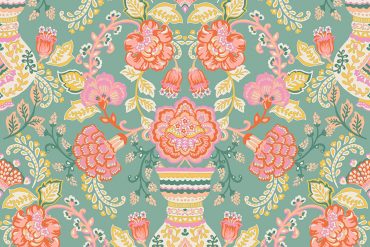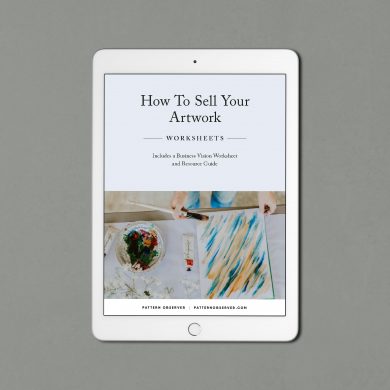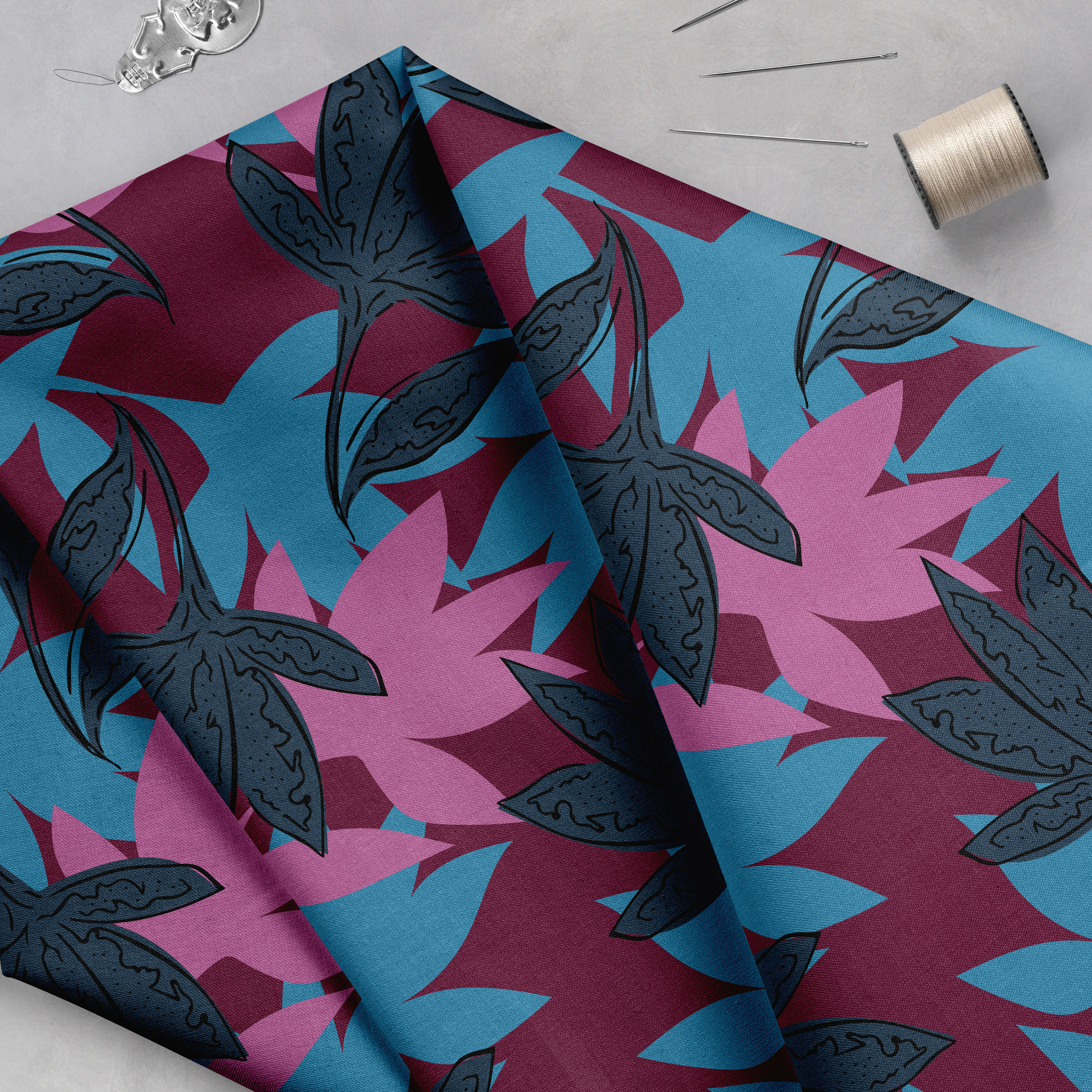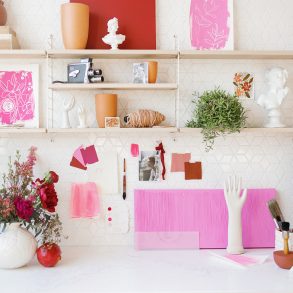Rouse Phillips is a decorative interior textiles business based in Sydney, Australia and run by Tim Rouse and Anastasia Phillips. Anastasia explained, “everything is designed by Tim and I as well as all aspects of the business. We work with local and overseas suppliers and manufacturers – everything that is produced overseas is made to the highest ethical standards. Currently we work with local and overseas clients, interior designer and architects.” We immediately fell in love with their work and had to learn more about their business!
Could you and Tim each tell us a little bit about your design background? How did you find your way into the field of textile design?
Tim and I both come from an art and design background. I studied screen printing and Tim is a painter. We met and both wanted to start a similar kind of project. We traveled to India for a number on months over 2 years to research. Then we spent a couple of years designing textiles for a number of well known fashion labels both in Australia and overseas. Rouse Phillips has been in development for a while but only have we been an official, functioning brand in homewares for about 6 months now. It was always our ultimate goal to start an interior textiles brand that designed really interesting, original and classic designs.
What is a typical day like in the studio? What are your favorite parts of the job and what do you find the most challenging?
We come in with our dog, we love being able to bring her with us everywhere. We have a big space so a day can be made up with answering emails, meetings and admin jobs but other days we can spread out and design. It varies on what we are focusing on at a particular time.
We love working for ourselves and being in control of all aspects of the business. Being creative and bringing ideas to fruition is really satisfying.
Could you talk a bit about how the two of you work together? Do you collaborate on every design or do you each have products you specialize in and take charge of?
We usually design separately but do consult each other on colour and pattern placement. One might make some things early on in the design process and the other might use these if the other has not.

Designing a rug is much more free than designing a fabric as you don’t have the repeat as a constraint. Despite this you do need to realize a hand knotted rug is not a digital or screen printed image – it is a hand made. Some shapes may not appear as they would when printed. It is wonderful working to the constraints. I love that two yarn colours can create another colour when ‘stippled’ together – it is nice to keep these things in mind when designing. The kilims are slightly more limiting and lend themselves to more geometric designs because of the way they are woven.
What role, if any, do trends play in your design process? Do you subscribe to trend or color forecasting services and if so, how does this affect the way you design?
We don’t really follow trends. We look at what colours are suggested by Pantone etc but we are not controlled by these. We tend to use a lot of the same colours like burnt oranges and olive greens. We like ‘off’ colours. They don’t date and this is a big part of our ethos.
What are your favorite sources for design inspiration? Favorite blogs, books, designers, etc?
We love designers like David Hicks, the Bloomsbury group, Nicky Haslam – his latest book is wonderful. We love Kazumi Yoshida (designer for Clarence House). We look at The World of Interiors each month.
Do you have any advice for aspiring designers hoping to break into the textile field?
Don’t be too influenced by passing trends and stay true to your own aesthetic. Work hard at it and try to gain some local and International support in the early days. Things take time!

